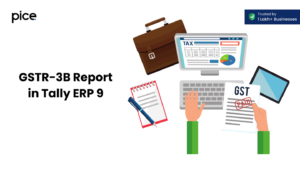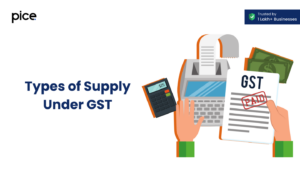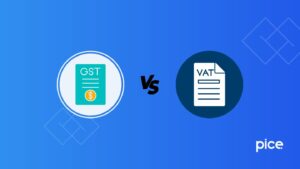An Guide GST Receivable and Payable Journal Entry
- 23 Jan 25
- 7 mins
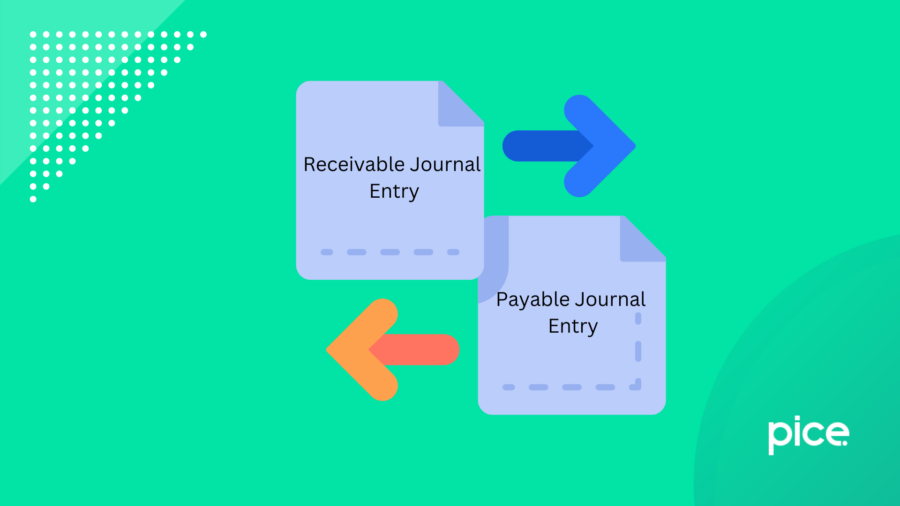
An Guide GST Receivable and Payable Journal Entry
Key Takeaways
- GST replaced multiple taxes, simplifying compliance and vendor management.
- Maintaining GST-specific accounts ensures regulatory compliance.
- Intrastate transactions require CGST and SGST journal entries.
- The composition scheme simplifies GST for small businesses.
- Accurate entries optimize ITC and prevent penalties.
GST (Goods and Services Tax) introduced in India in 2017 has replaced multiple indirect taxes on goods and services supply. Simplified vendor payments and vendor management resulting in vendor delights are the outcomes of the goods and service tax introduction.
However, this uniform tax requires proper record-keeping for taxpayers to comply with the GST laws. Journal entries help maintain records of GST for future reference. Here is a detailed GST receivable and payable journal entry for intrastate transactions to elaborate on how this tax functions in the books of accounts.
Accounting Under GST
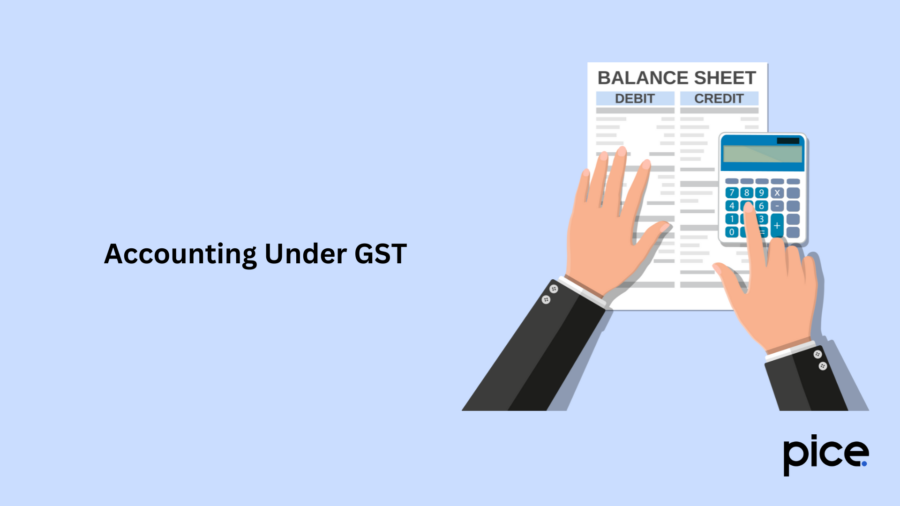
As GST includes a dual component structure comprising CGST (Central Goods and Services Tax), SGST (State Goods and Services Tax), and IGST (Integrated Goods and Services Tax), every GSTIN has to hold the following accounts:
● Input CGST account
● Input SGST account
● Input IGST account
● Output CGST account
● Output SGST account
● Output IGST account
● Electronic Cash Ledger (needs to be updated and maintained on the government’s unified portal for GST for cash deposit and payment)
● E-credit Ledger (to detect input tax credit from a taxpayer’s monthly returns)
● E-liability ledger (reflects a taxpayer’s total tax liability for a month)
Accounts Required to be Maintained Under GST
The accounting entries significantly affect the balance sheet of businesses. Businesses registered under GST need to maintain records at the principal place of business under Section 35 of the CGST Act, 2017 in the following accounts:
● Stock Account: A stock account needs to maintain records of stocks purchased and sold. This account includes the opening balance, the balance of stock of raw materials, the number of items delivered or received, finished goods, waste, scrap, goods lost, destroyed, stolen, or written off, and additional information pertaining to the business.
● Records of Loans: Records of loans and payments made or received need to be maintained in this account.
● Tax Account: This account includes details pertaining to taxes owed or collected, ITC claimed, debit notes, credit notes, and delivery challan that the business receives or issues during a specific tax period.
● Supplier Details: The name and address from whom the business purchases taxable goods or services should be included in this account.
● Recipient Details: This account includes the name and address of the buyer to whom the business supplies goods or services.
● Warehouse or Storage Details: Details of goods stored in transit and goods stored at that time are included in this account.
● Account of Production: This account includes month-wise quantitative details related to raw materials, manufactured goods, by-products, and waste produced.
● Account for Services: Details of services, input services utilized, and services supplied are components of this account.
Accounting Entries Under GST
Understanding accounting entries under GST can be easy if you consider the following example:
Mr X purchased goods for ₹1,00,000 from a registered supplier in his state. He sold these goods for ₹1,50,000 in the same state. Additionally, he paid ₹5,000 legal consultation fees and bought furniture for ₹12,000.
Assuming GST on goods is 5%, CGST and SGST are 2.5% each. GST on legal consultation fees is 9% each for CGST and SGST while GST on furniture is 14% each for CGST and SGST.
Here are the accounting entries for intrastate transactions:
Accounting Entries for Intrastate Transactions
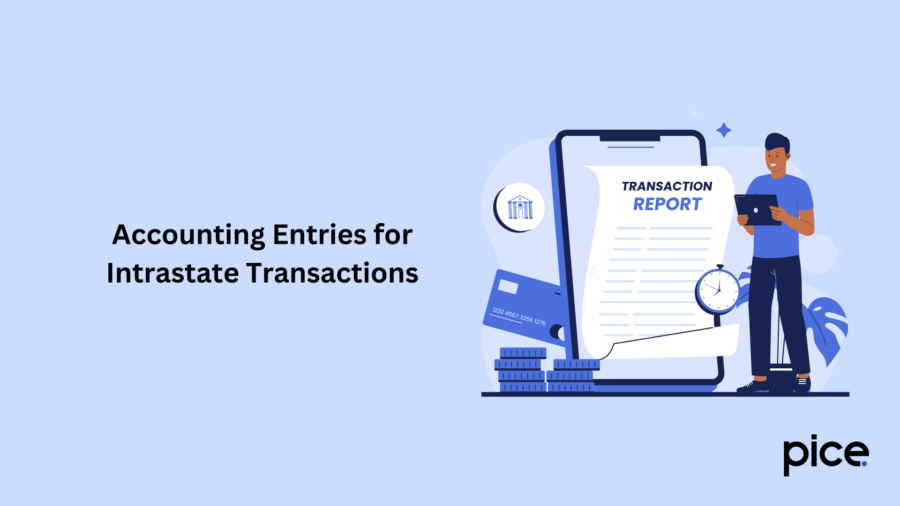
The accounting entries for the intrastate transaction are as follows:
| Details | Debit (₹) | Credit (₹) |
| Purchase account | 1,00,000 | |
| CGST input | 2,500 | |
| SGST input | 2,500 | |
| To creditor’s account | 1,05,000 | |
| Debtor’s account | 1,57,500 | |
| Sales account | 1,50,000 | |
| Output CGST | 3,750 | |
| Output SGST | 3,750 | |
| Consultation charges account | 5,000 | |
| Input CGST | 450 | |
| Input SGST | 450 | |
| To bank account | 5,900 | |
| Furniture account | 12,000 | |
| Output CGST | 1,680 | |
| Output SGST | 1,680 | |
| To the furniture account | 15,360 |
Total Input CGST = ₹2,500 + ₹450 + ₹1,680 = ₹4,630
Total Input SGST = ₹2,500 + ₹450 + ₹1,680 = ₹4,630
Total Output CGST = ₹7,500
Total Output SGST = ₹7,500
Net CGST payable = ₹7,500 - ₹4,630 = ₹2,870
Net SGST payable = ₹7,500 - ₹4,630 = ₹2,870
Notably, the above process is for intrastate transactions. The journal entries for interstate transactions are different due to IGST applicable on goods traded. IGST applies to goods traded between two states or union territories.
Accounting Entries By Composition Dealer
The GST Composition Scheme is specially designed for small taxpayers as a relief mechanism. It simplifies compliance while reducing the administrative burden for taxpayers registered under this scheme. This scheme allows taxpayers to pay lower taxes at a fixed composition rate on their aggregate annual turnover.
Small businesses can efficiently manage their tax obligations by knowing the eligibility criteria, compliance requirements, and tax rates. Notably, the composition scheme under GST differs from composite supply.
Composite supply in GST refers to the supply of two or more goods, services, or both by a taxable person to a recipient. In other words, these are bundled supplies wherein there is a principal supply.
Principal supply refers to a predominant element that is supplied in addition to other ancillaries. For instance, a taxable person sells a laptop along with a pre-installed operating system and a case. In such an instance, the laptop is the principal supply while the operating system and carrying case are ancillary supplies in the composite supply of goods.
Conclusion
Accurate GST receivable and payable journal entry is essential for GST-registered taxpayers to adhere to GST regulations. It helps taxpayers pay the applicable GST liability to the government, thereby avoiding the imposition of penalties, fees, or interest.
Accurate journal entry further helps taxpayers claim and optimise ITC to reduce their output tax liability, ensuring a complete supply chain solution for goods traded.
💡If you want to streamline your payment and make GST payments, consider using the PICE App. Explore the PICE App today and take your business to new heights.
 By
By 






